How to make your pottery studio more efficient
In the world of pottery, efficiency can be the difference between a satisfying day at the wheel and a frustrating struggle with disorganization. Whether you’re a seasoned pro or just starting out, enhancing the efficiency of your pottery studio can lead to smoother workflows and more creative output. Imagine walking into your studio and everything you need is right at your fingertips, like a well-oiled machine that hums along as you create. In this article, we’ll explore various strategies and tips to help you achieve that dream workspace. Get ready to transform your pottery studio into a place where creativity flows as freely as the clay you work with!
A well-organized workspace is like a blank canvas waiting for your artistic touch; it can significantly improve your productivity. Start by arranging your tools, materials, and equipment in a way that allows for easy access and optimal workflow. Consider grouping similar items together—keep your clay types in one area, glazes in another, and tools like sponges and trimming knives close at hand. You might even want to invest in some clear storage containers so you can see what you have at a glance. This way, you won’t waste precious time rummaging through drawers looking for that one elusive tool. Remember, an organized studio not only saves time but also reduces stress, allowing you to focus on what you love most: creating beautiful pottery.
Implementing effective time management techniques can help potters maximize their studio hours. Think of your time as a valuable resource—one that you should manage just as carefully as your clay. Start by planning your work sessions in advance. Set aside specific times for throwing, glazing, and cleaning up. By blocking out time for each activity, you create a roadmap for your day. Additionally, prioritize tasks based on deadlines and importance. This way, you can tackle the most crucial projects first and leave less urgent tasks for later. But how do you stay on track? One method is to use a timer. Set it for 25 minutes, work diligently, then take a five-minute break. This technique, known as the Pomodoro Technique, can help you maintain focus and stamina throughout your studio sessions.
Establishing clear and achievable goals can guide your pottery projects and keep you motivated. Think of your goals as the compass that directs your creative journey. Start by setting daily, weekly, and monthly goals. Daily goals could be as simple as completing a certain number of pieces or experimenting with a new glaze technique. Weekly goals might include finishing a larger project or preparing for an upcoming show. Monthly goals can help shape your overall pottery journey—perhaps you want to learn a new skill or expand your inventory. By breaking down your ambitions into manageable chunks, you’ll find it easier to stay focused and productive in your studio.
Short-term goals provide immediate motivation and can lead to quick wins in your pottery projects. For example, if you aim to create three small bowls by the end of the day, you can experience a sense of accomplishment that fuels your passion for pottery. These little victories can boost your confidence and keep you engaged in your craft. Think of short-term goals as stepping stones that lead you toward larger aspirations.
Long-term goals are essential for sustained growth and improvement in your craft. They help you visualize where you want to be in the future. For instance, you might aim to have a solo exhibition in two years or to master a specific pottery technique. Understanding the importance of vision and planning can shape your approach to pottery, guiding you through challenges and celebrating achievements along the way.
Incorporating technology into your pottery practice can streamline various processes in your studio. From design software that allows you to visualize your creations before you start working with clay to inventory management tools that help you keep track of your materials, technology can be a game-changer. Consider using apps or software for scheduling your studio time, tracking your projects, and even managing your sales if you sell your pottery. By embracing digital tools, you can free up more time for the hands-on aspects of pottery that you love.
Proper material management is crucial for efficiency in your pottery studio. It’s not just about having the right tools; it’s also about knowing how to source, store, and utilize your clay and other supplies effectively. Start by creating a system for organizing your materials. Label containers clearly and keep an inventory list to prevent shortages. This proactive approach ensures that you always have what you need on hand, allowing you to focus on your creative process without interruptions.
Keeping track of your inventory can prevent shortages and waste, which is especially important in a creative field like pottery. Consider implementing a simple inventory tracking system. You can use a spreadsheet to log your materials, noting quantities and usage dates. This way, you’ll know when it’s time to reorder supplies, preventing those last-minute trips to the store that disrupt your workflow.
Implementing waste reduction strategies can save resources and money in your pottery studio. Consider reusing scraps of clay whenever possible—this not only minimizes waste but also encourages creativity as you find new ways to incorporate leftover materials into your projects. Additionally, be mindful of your glaze application techniques to avoid excess waste. By being conscious of your usage, you can create a more sustainable studio environment while still producing beautiful pottery.
The environment of your pottery studio can greatly influence your creativity and efficiency. A positive and inspiring atmosphere can make all the difference in your work. Start by evaluating your studio’s lighting and ventilation; proper lighting can enhance your ability to see details in your work, while good ventilation ensures a comfortable and safe workspace. Consider adding personal touches to your studio decor that inspire you—whether it’s artwork, plants, or motivational quotes, creating a space that resonates with you can spark your creativity and keep you motivated.
Proper lighting and ventilation are essential for comfort and safety in your pottery studio. Natural light can enhance your workspace, so if possible, set up your studio near a window. If that’s not an option, consider investing in bright, adjustable lamps that mimic natural light. For ventilation, ensure that your studio has good airflow, especially when working with glazes and other materials that may release fumes. A fan or an open window can make a big difference in maintaining a comfortable environment.
Incorporating inspiring decor can motivate creativity in your studio. Think about adding elements that reflect your personality and artistic style. This could be a bulletin board filled with images of pottery that inspires you, or shelves lined with your favorite books on ceramics. Personalizing your studio space not only enhances its aesthetic appeal but also creates an environment that encourages productivity and innovation.
- How can I improve my pottery skills? Regular practice, taking classes, and seeking feedback from experienced potters can significantly enhance your skills.
- What is the best way to store my clay? Keep your clay in airtight containers to prevent it from drying out.
- How do I prevent waste in my pottery studio? Reuse scraps, plan your projects carefully, and monitor your material usage to reduce waste.
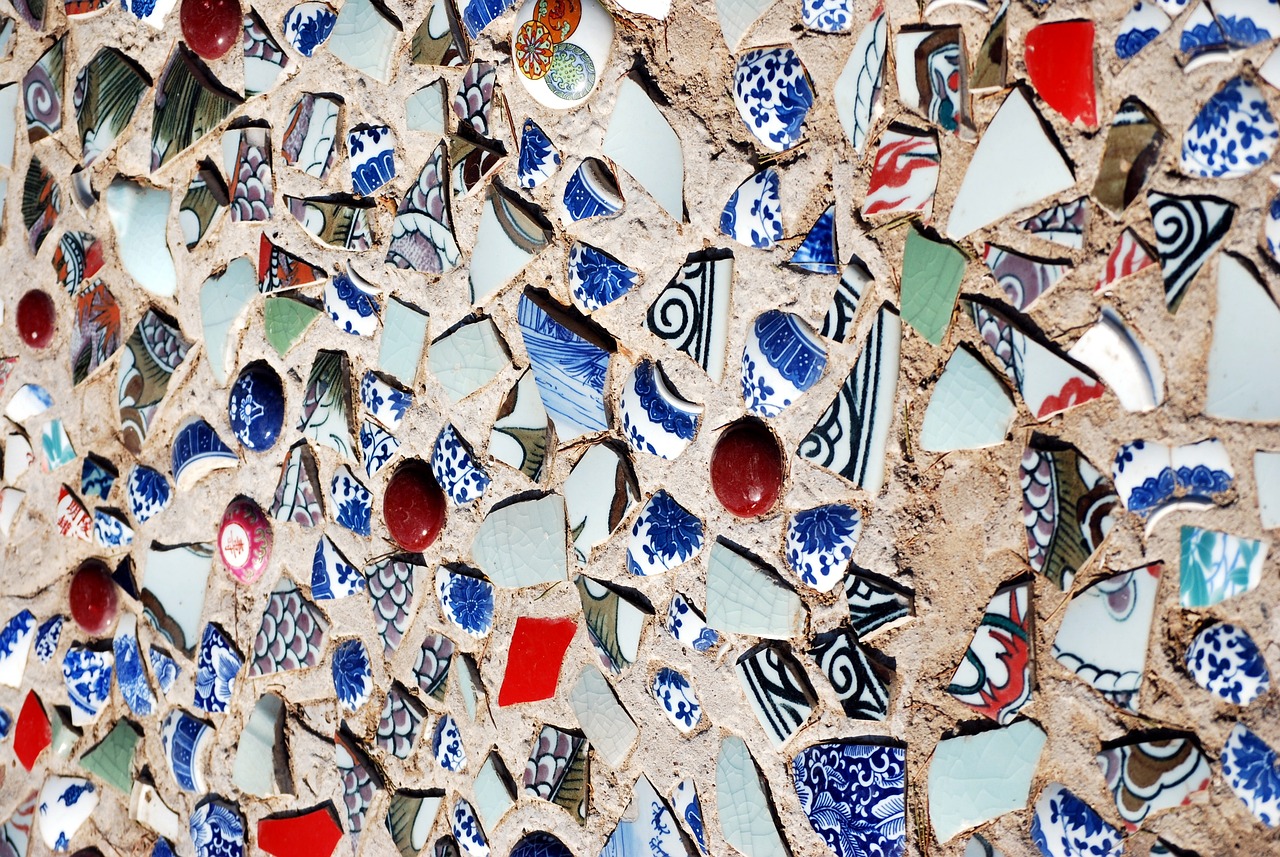
Organizing Your Workspace
When it comes to pottery, the workspace can be the unsung hero of your creative journey. A well-organized workspace can significantly boost your productivity and help you tap into your artistic flow. Imagine walking into your studio and instantly feeling inspired because everything has its place. Sounds dreamy, right? Well, it’s entirely achievable with a little planning and some strategic organization.
First off, let’s talk about tool arrangement. Your tools are your best friends in the studio, so why not treat them as such? Consider setting up a dedicated area for your essential tools, like your sculpting knives, sponges, and rolling pins. You could use a pegboard to hang tools within arm's reach, or invest in storage bins that can be labeled for easy identification. This way, you won’t waste precious time searching for that one elusive tool when inspiration strikes!
Next, let’s dive into material storage. Clay, glazes, and other materials can quickly clutter your space if not stored properly. Use clear bins to store different types of clay and glazes, and label them for quick access. Additionally, consider creating a designated clay area where you can keep your clay moist and workable. Not only does this keep your space tidy, but it also ensures you’re not wasting materials by letting them dry out.
Another aspect to consider is your workspace layout. Ideally, you want to create a workflow that allows you to move seamlessly from one task to another. For instance, if you’re throwing on the wheel, make sure your wedging table is nearby, and your drying racks are easily accessible. This minimizes the hassle of moving around and helps maintain your creative momentum. Think of your studio as a well-oiled machine where every component works in harmony.
Lastly, don’t forget about the little things that can make a big difference. Keep a small caddy or container for miscellaneous items like brushes, sponges, and other tools that you use frequently. This way, you can grab everything you need in one go rather than making multiple trips around the studio. And remember, organization is not a one-time task. Regularly reassess your space and make adjustments as your needs evolve. Your pottery studio should grow alongside your skills!
By organizing your workspace efficiently, you’re not just creating a physical space; you’re cultivating an environment that fosters creativity and productivity. So roll up your sleeves, get your studio in order, and watch how it transforms your pottery experience!
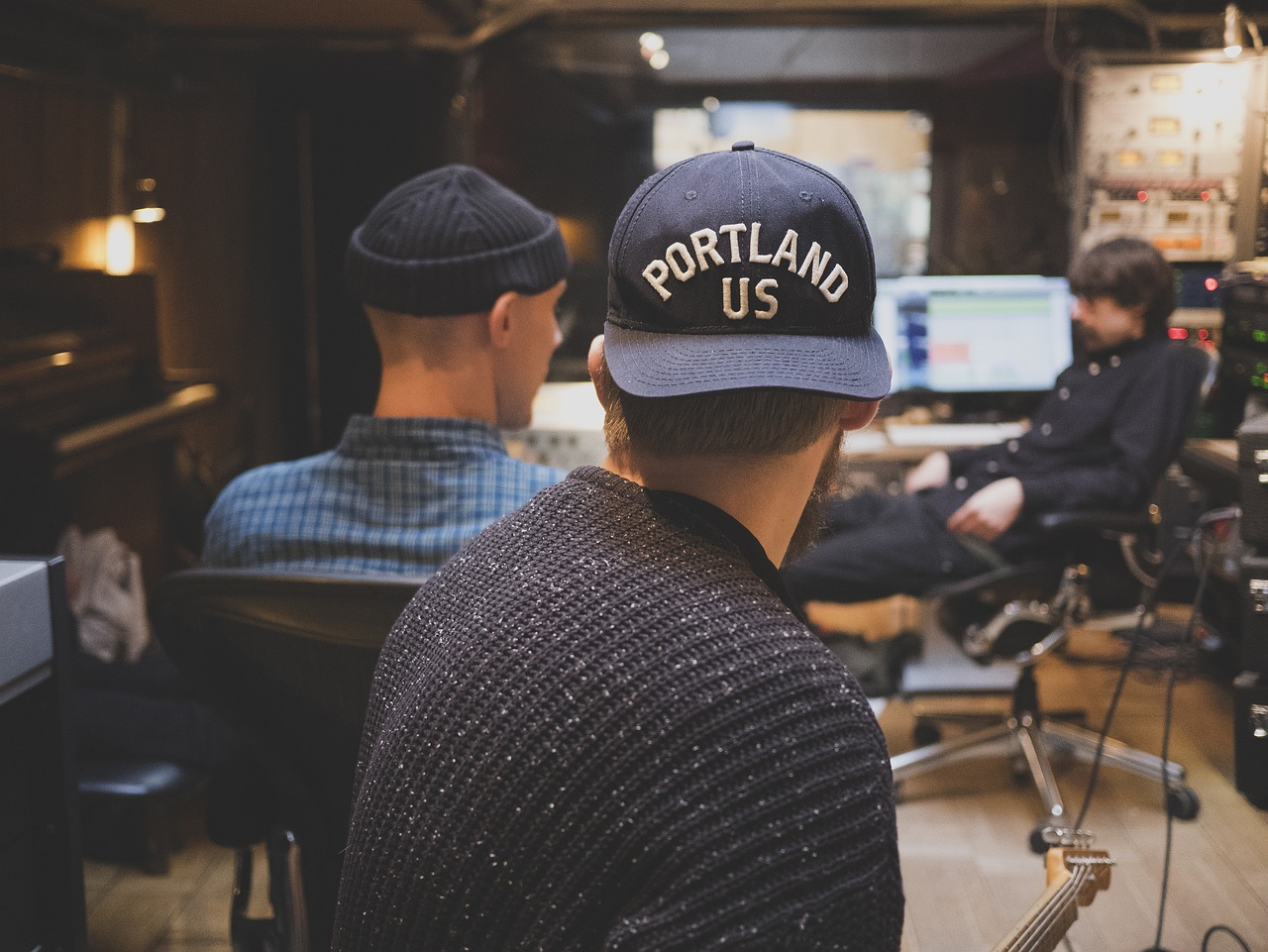
Time Management Techniques
When it comes to pottery, time is as precious as the clay you mold. Implementing effective can turn your creative chaos into a well-oiled machine, allowing you to maximize every minute spent in your studio. Imagine walking into your workspace, knowing exactly what you need to do and when to do it—sounds dreamy, right? Well, it’s entirely possible with a few strategic approaches!
First off, consider the power of planning. Just like you wouldn’t start a road trip without a map, you shouldn't dive into a pottery session without a clear plan. Take a moment at the beginning of each week to outline your goals and tasks. This could include everything from prepping clay, throwing pots, to glazing and firing. By mapping out your week, you can prioritize high-impact tasks that lead to significant progress in your projects. You might even want to create a simple table to visualize your weekly plan:
| Day | Tasks | Time Allocated |
|---|---|---|
| Monday | Clay Preparation | 2 hours |
| Tuesday | Throwing Pots | 3 hours |
| Wednesday | Trimming and Detailing | 2 hours |
| Thursday | Glazing | 2 hours |
| Friday | Firing | 2 hours |
Next, let’s talk about setting goals. Establishing clear, achievable goals is crucial for guiding your pottery projects. Think of your goals as the compass that keeps you on track. You can break them down into short-term and long-term goals. Short-term goals might include completing a specific number of pieces each week, while long-term goals could involve mastering a new technique or preparing for an upcoming exhibition. By keeping your goals visible, you’ll stay motivated and focused on what truly matters.
But how do you ensure you’re making progress? One effective method is to use a time-blocking technique. This involves dedicating specific blocks of time to particular tasks. For instance, you might allocate 30 minutes for sketching designs, followed by an hour for throwing pots. This approach not only helps you stay organized but also prevents you from getting overwhelmed by trying to juggle multiple tasks at once. Plus, it allows you to measure your productivity over time, giving you insights into what works and what doesn’t.
Another technique to consider is the Pomodoro Technique. This method encourages you to work in short, focused bursts, typically 25 minutes, followed by a 5-minute break. After completing four “Pomodoros,” you take a longer break of 15-30 minutes. This technique can help maintain your focus and prevent burnout, especially during long studio sessions. You might be surprised at how much you can accomplish when you give yourself permission to take regular breaks!
Lastly, don’t underestimate the importance of reviewing your progress. At the end of each week, take some time to reflect on what you achieved, what challenges you faced, and how you can improve moving forward. This practice not only boosts your motivation but also provides valuable insights that can refine your time management strategies. After all, pottery is as much about the journey as it is about the finished piece!
Incorporating these into your pottery routine can transform your studio experience from chaotic to productive. So, grab your calendar, set those goals, and watch your pottery projects flourish!
- How can I stay motivated when working on long-term pottery projects? Setting small, achievable milestones can help keep your motivation high. Celebrate each small victory!
- What if I don’t have enough time for my pottery? Prioritize your tasks and consider time-blocking to make the most of the time you do have.
- Can technology help with time management in pottery? Absolutely! There are many apps available for scheduling and tracking your tasks that can make your life easier.

Setting Goals
Establishing clear and achievable goals is like setting a compass for your pottery journey. Just as a sailor needs to know their destination, you need to know what you want to achieve in your studio. Goals not only provide direction but also keep you motivated and focused. Imagine walking into your studio without a plan—it can feel overwhelming, right? By setting specific targets, you can break down your pottery projects into manageable steps, making the process less daunting and more enjoyable.
To effectively set your goals, start by thinking about what you want to accomplish in the short-term and long-term. This dual approach allows you to enjoy the satisfaction of quick wins while also keeping an eye on your bigger aspirations. For instance, you might want to create a new collection of bowls this month (short-term), while also dreaming about hosting your own pottery exhibition in a year (long-term). By balancing these two types of goals, you can maintain momentum and enthusiasm in your creative process.
When crafting your goals, consider using the SMART criteria—Specific, Measurable, Achievable, Relevant, and Time-bound. This framework helps ensure that your objectives are well-defined and attainable. For example, instead of saying, “I want to get better at pottery,” you could say, “I will complete three new pottery pieces using different techniques by the end of the month.” This specific goal not only gives you a clear target but also a timeline to work within, making it easier to track your progress.
Here’s a quick table to illustrate the difference between vague and SMART goals:
| Vague Goals | SMART Goals |
|---|---|
| Get better at pottery | Complete three new pottery pieces using different techniques by the end of the month |
| Make more pottery | Produce five unique mugs for the upcoming craft fair in two weeks |
| Learn glazing | Take a glazing workshop and apply techniques to three pieces within a month |
Additionally, consider writing your goals down and placing them somewhere visible in your studio. This simple act can serve as a daily reminder of what you’re working towards, keeping you accountable and inspired. You might even want to share your goals with fellow potters or friends; discussing your ambitions can create a supportive environment where you feel empowered to achieve them.
Ultimately, the process of setting goals in your pottery studio is about finding what works best for you. Everyone’s journey is unique, so don’t hesitate to adjust your goals as you learn and grow. Remember, it’s not just about reaching the destination; it’s about enjoying the ride and discovering your artistic voice along the way.
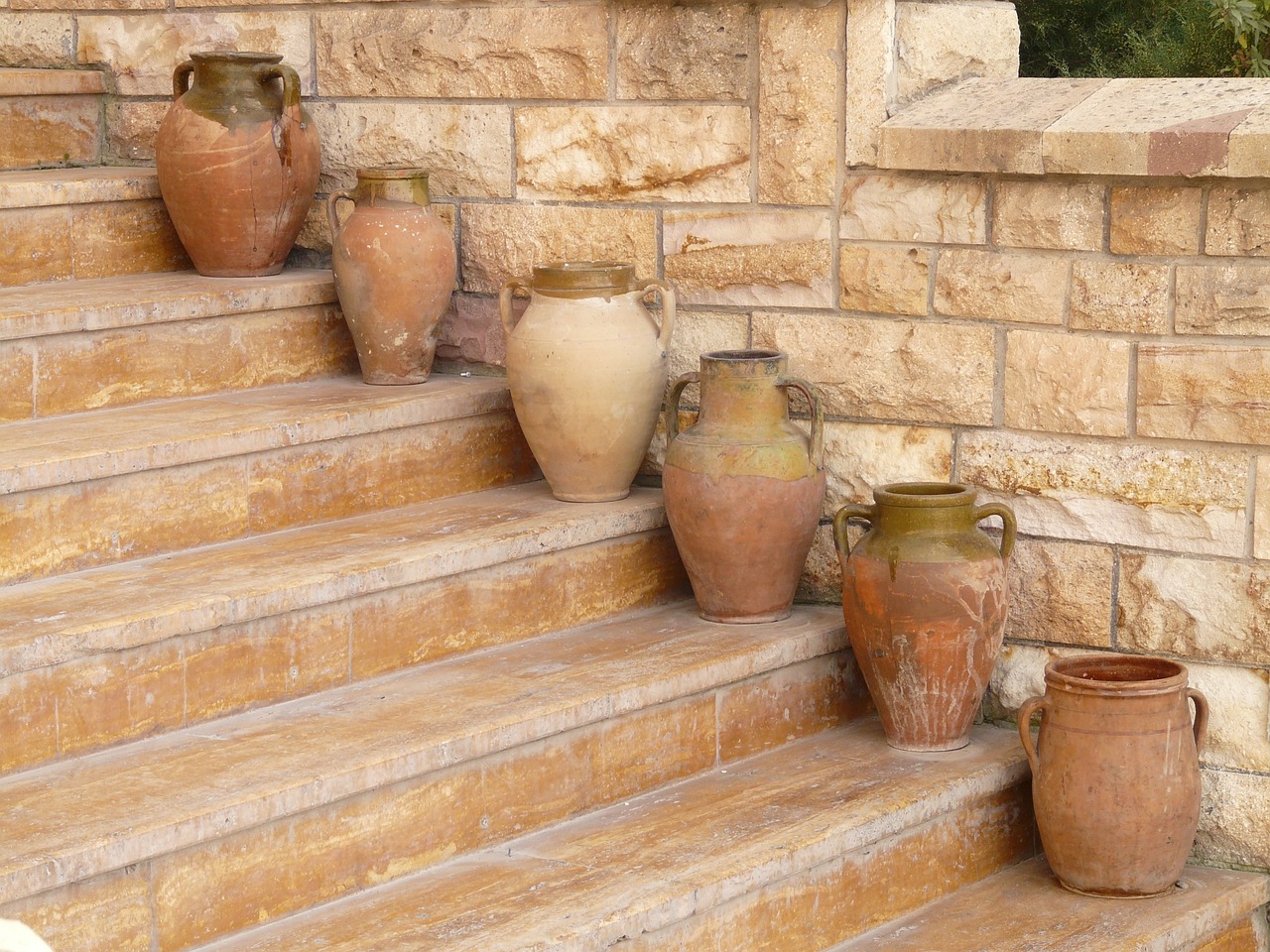
Short-Term Goals
Setting in your pottery studio can be a game-changer. Think of these goals as stepping stones that lead you toward your larger aspirations. They provide immediate motivation and a clear path to follow. For instance, if your long-term goal is to create a stunning collection for an upcoming exhibition, a short-term goal could be to complete two pieces each week. This way, you break down your larger ambition into manageable tasks that keep you engaged and focused.
Short-term goals should be specific, measurable, achievable, relevant, and time-bound (SMART). By using the SMART criteria, you can create goals that not only inspire you but also keep you accountable. For example, instead of saying, "I want to improve my glazing technique," a SMART goal would be, "I will practice glazing on three different pieces this week and seek feedback from my peers." This clarity helps you track your progress and celebrate small victories along the way.
As you set these goals, consider incorporating a simple tracking system. You might use a goal-tracking chart or a digital app to keep tabs on your progress. Here’s a quick example of what that might look like:
| Goal | Action Steps | Completion Date | Status |
|---|---|---|---|
| Complete two pieces | Gather materials, sketch designs, and start working | Every Friday | In Progress |
| Practice glazing | Experiment with three different glazes | Next Wednesday | Not Started |
Another effective method is to share your goals with fellow potters or friends. By doing this, you create a support system that encourages accountability. You might find that discussing your goals helps you refine them even further. Plus, having someone cheer you on can make the process much more enjoyable.
In conclusion, short-term goals are vital for maintaining momentum in your pottery practice. They not only help you stay focused but also provide a sense of achievement as you complete each task. So, grab a notebook, jot down those goals, and watch as your pottery journey transforms into a series of rewarding milestones!
- What are short-term goals? Short-term goals are specific, actionable objectives that you aim to achieve in the near future, typically within a few weeks or months.
- How can I set effective short-term goals? Use the SMART criteria—make them Specific, Measurable, Achievable, Relevant, and Time-bound to ensure clarity and focus.
- Why are short-term goals important for potters? They help maintain motivation, break down larger projects into manageable tasks, and provide a sense of accomplishment as you progress.

Long-Term Goals
When it comes to pottery, setting is like crafting a masterpiece; it requires vision, patience, and a clear direction. Think of your pottery journey as a road trip. Without a destination in mind, you might end up wandering aimlessly, missing out on the breathtaking views along the way. Long-term goals act as your roadmap, guiding you through the twists and turns of your creative process.
These goals are not just about achieving a specific skill level or producing a certain number of pieces; they encompass your entire artistic journey. For instance, consider what you want to achieve in the next five years. Do you aspire to showcase your work in galleries, teach pottery classes, or even start your own pottery business? By outlining these aspirations, you create a framework that helps you stay focused and motivated.
To effectively implement long-term goals, it’s essential to break them down into manageable milestones. This approach allows you to celebrate small victories along the way, keeping your enthusiasm alive. For example, if your long-term goal is to hold a solo exhibition, you might set milestones like:
- Completing a certain number of pieces each month.
- Building a strong online presence through social media and a personal website.
- Networking with local artists and participating in community events.
By focusing on these smaller objectives, you can maintain momentum and avoid feeling overwhelmed. Additionally, regularly revisiting and adjusting your long-term goals ensures that they remain relevant to your evolving artistic vision. Just like the clay you work with, your goals can be reshaped and refined as you grow in your craft.
Moreover, it’s crucial to document your progress. Keeping a journal or an online portfolio not only allows you to track your achievements but also serves as a source of inspiration during challenging times. When you look back at how far you’ve come, you’ll be reminded of your dedication and the joy that pottery brings to your life.
In conclusion, long-term goals in pottery are about more than just the end result; they encompass the entire journey, from the first lump of clay to the final glaze. By setting clear, achievable objectives and breaking them down into actionable steps, you can navigate your pottery path with purpose and passion. So, grab your tools, set your sights high, and let your creativity flourish!
1. How do I set long-term goals for my pottery practice?
Begin by reflecting on your aspirations and what you want to achieve in the future. Consider different aspects of your pottery journey, such as skill development, exhibitions, or business ventures, and write down your goals.
2. How often should I revisit my long-term goals?
It's a good idea to review your long-term goals at least once a year. This allows you to assess your progress and make any necessary adjustments based on your evolving interests and circumstances.
3. Can I change my long-term goals?
Absolutely! Your goals should evolve as you grow as an artist. Don’t hesitate to reshape them based on new experiences, interests, or opportunities that come your way.
4. How can I stay motivated to achieve my long-term goals?
Celebrate small milestones along the way, connect with other potters, and keep your workspace inspiring. Surrounding yourself with a supportive community can significantly boost your motivation.
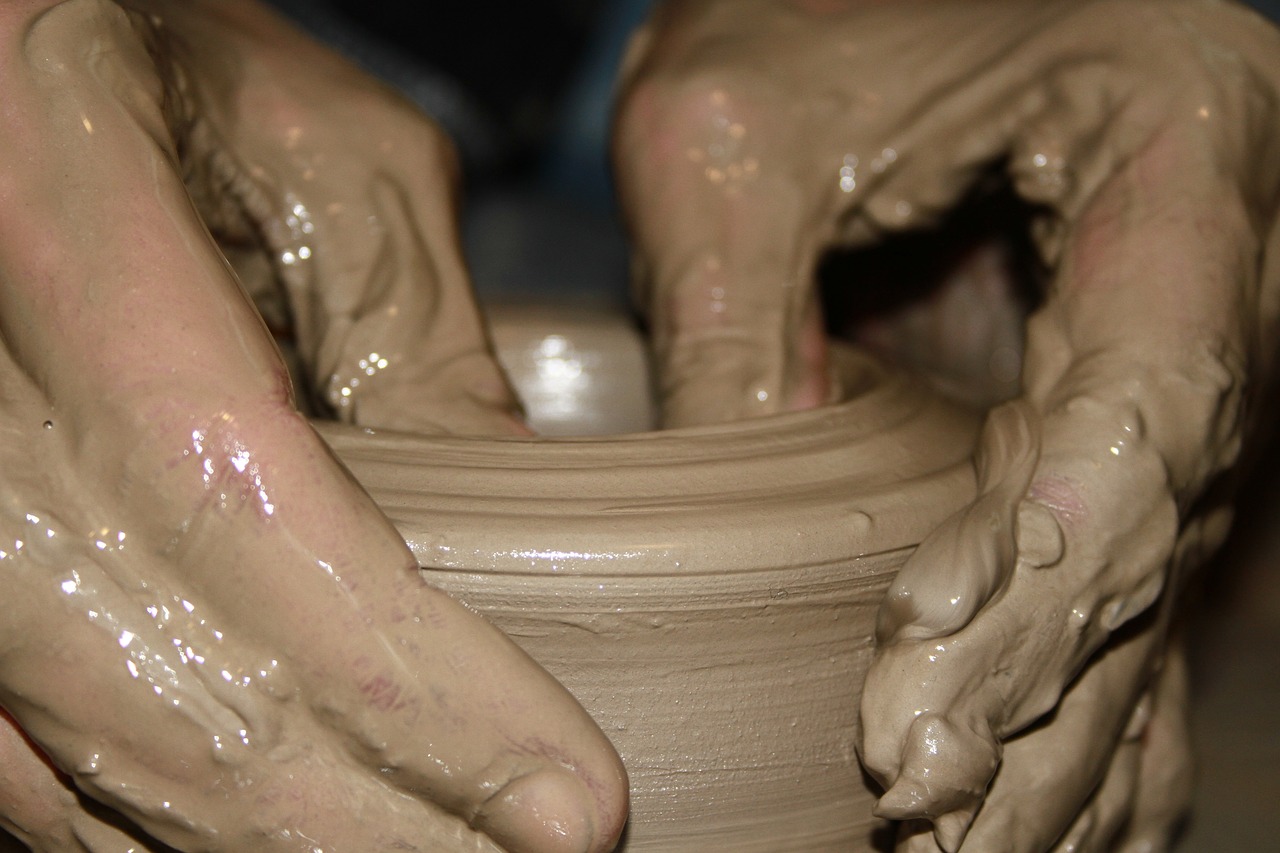
Using Technology
In today's fast-paced world, integrating technology into your pottery studio can be a game-changer. Imagine having tools that not only streamline your processes but also enhance your creativity! With the right digital tools, you can transform your pottery-making experience. For instance, software applications can assist in designing unique pieces, managing your inventory, and even scheduling your studio time. This means less time worrying about logistics and more time focusing on your art.
One of the most beneficial aspects of using technology is the ability to visualize your creations before they come to life. Programs like CAD (Computer-Aided Design) allow you to create detailed designs and prototypes, giving you a clear roadmap for your projects. This not only saves you from potential mistakes but also helps you experiment with different styles and forms without wasting materials. Additionally, you can utilize online resources and communities to gather inspiration and feedback from fellow potters, which can be incredibly motivating.
Moreover, managing your studio's inventory can become a breeze with the help of inventory management software. By keeping track of your clay supplies, glazes, and tools digitally, you can avoid the frustration of running out of materials mid-project. Imagine having a system that alerts you when stock is low or when it’s time to reorder supplies! This level of organization frees up your mental space, allowing you to concentrate on your artistic process.
Another area where technology shines is in scheduling. Time management apps can help you allocate your studio hours more effectively. You can set reminders for different tasks, from throwing clay to glazing your pieces. This structured approach ensures that you maximize your productivity while still allowing for those spontaneous bursts of creativity that every artist cherishes.
Finally, let’s not forget about the power of social media and online marketplaces. Platforms like Instagram and Etsy enable you to showcase your work to a wider audience and even sell your pieces directly to customers. This not only provides a sense of accomplishment but can also lead to additional income streams. So, why not embrace technology in your pottery studio? The benefits are endless, and the possibilities are truly exciting!
- What types of technology can I use in my pottery studio?
There are various tools available, including design software, inventory management systems, and scheduling apps that can enhance your pottery-making process. - How can technology improve my pottery designs?
Using CAD software allows you to visualize your designs before creating them, reducing material waste and helping you experiment with different styles. - Is it difficult to integrate technology into my existing studio setup?
No, many tools are user-friendly and can be easily adapted to your current workflow. Start with one or two tools and gradually expand as you become more comfortable. - Can social media really help me sell my pottery?
Absolutely! Platforms like Instagram and Etsy are great for showcasing your work and reaching potential customers, helping you build a brand and generate sales.
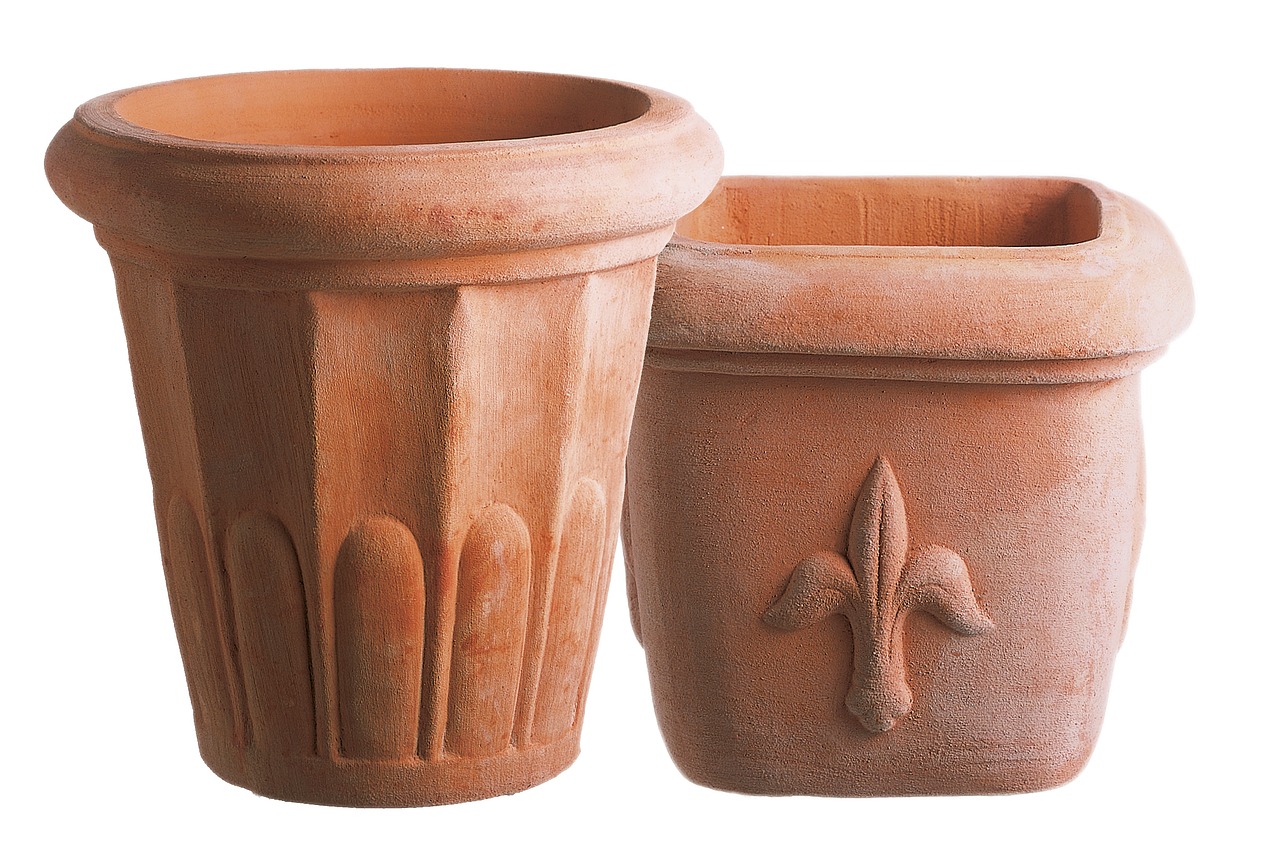
Efficient Material Management
Proper material management is crucial for efficiency in your pottery studio. Think of your materials as the lifeblood of your creative process; without them, you can't bring your artistic visions to life. To ensure that your studio runs smoothly, it’s essential to have a solid plan for sourcing, storing, and utilizing clay and other supplies. Imagine walking into your studio and instantly knowing where everything is—no more rummaging through boxes or searching for that elusive tool. That’s the kind of organization that can make all the difference.
First off, let’s talk about sourcing materials. Establish relationships with reliable suppliers who can provide high-quality clay, glazes, and tools. This not only ensures that you have a consistent supply but also allows you to negotiate better prices. You might even consider joining local pottery groups or forums where you can share resources and recommendations. Think of it as building a community; you’ll be surprised at how much you can learn from fellow potters and how they manage their materials.
Now, once you have your materials, the next step is storage. An efficient storage system can save you time and energy. Utilize shelves, bins, and labeled containers to categorize your materials. For instance, you could have a dedicated area for different types of clay, another for glazes, and yet another for tools. This way, when inspiration strikes, you can quickly grab what you need without wasting precious moments. Consider using a color-coding system for your containers; it’s not only visually appealing but also makes finding things a breeze.
When it comes to utilizing your materials, keeping track of your inventory is vital. You don’t want to find yourself halfway through a project only to realize you’re out of clay or glaze. Implementing an inventory tracking system can help you monitor your supplies effectively. You can use simple spreadsheets or even specialized software designed for artists. This way, you’ll always know what you have on hand and when it’s time to restock. As you keep tabs on your materials, consider creating a table that outlines your inventory, including details like quantity, type, and supplier information:
| Material Type | Quantity | Supplier | Last Ordered |
|---|---|---|---|
| Clay | 50 lbs | Clay Supply Co. | 01/15/2023 |
| Glaze | 20 lbs | Glaze Masters | 01/20/2023 |
| Tools | 15 | Potter's Haven | 01/10/2023 |
Lastly, let’s touch on waste reduction strategies. Every potter knows that clay can be messy, and waste can quickly pile up if you’re not careful. Implementing waste reduction strategies not only saves resources but also saves you money. One effective method is to recycle any leftover clay. Instead of tossing it away, gather it up and store it for future use. You can create a dedicated recycling bin in your studio for this purpose. Additionally, consider planning your projects to minimize excess material. For instance, if you're creating a series of similar pieces, try to calculate how much clay you'll need beforehand. This way, you can avoid over-preparing and wasting materials.
In conclusion, managing your materials efficiently is all about organization and foresight. By establishing a reliable sourcing plan, creating an effective storage system, keeping track of your inventory, and implementing waste reduction strategies, you can enhance your pottery studio's efficiency. Remember, a well-managed studio not only boosts productivity but also allows you to focus on what truly matters—your creativity.
- What is the best way to store clay? Clay should be stored in airtight containers to prevent it from drying out. Keeping it in a cool, dry place is also recommended.
- How can I reduce waste in my pottery studio? Recycling leftover clay and planning your projects carefully can significantly reduce waste.
- What tools are essential for managing materials? A good set of shelves, labeled containers, and inventory tracking software can help you manage your materials efficiently.
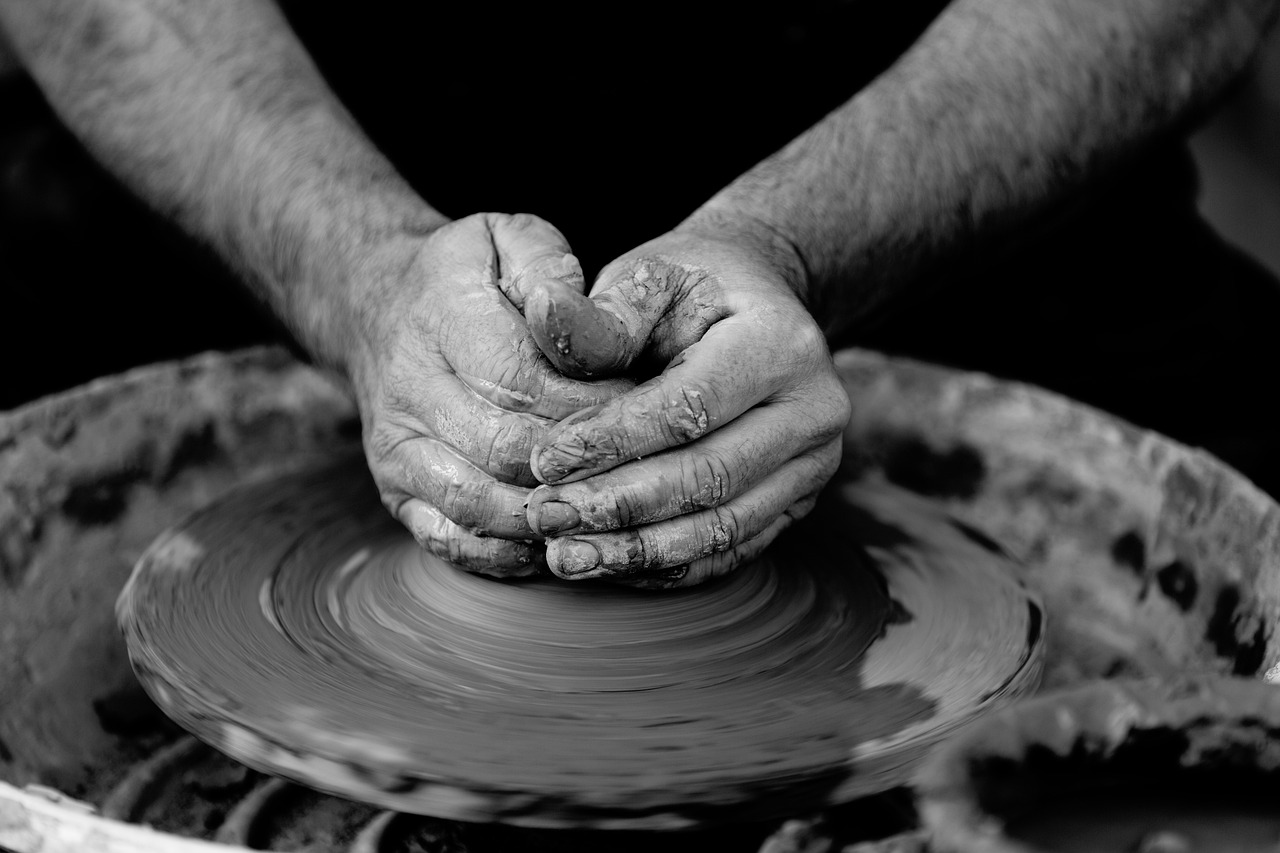
Inventory Tracking
Keeping track of your inventory is not just a mundane task; it’s the backbone of a successful pottery studio. Imagine walking into your studio and knowing exactly what materials you have at hand, when to reorder supplies, and how to minimize waste. This level of awareness can transform your workflow and enhance your creativity. To achieve this, you can adopt several practical strategies that make inventory tracking both efficient and effective.
First off, consider implementing a simple inventory management system. You don’t need to invest in expensive software right away; even a basic spreadsheet can work wonders. By listing all your materials—like different types of clay, glazes, and tools—you can easily monitor what you have and what needs restocking. Here’s a simple example of how you might structure your inventory in a table:
| Material | Quantity | Reorder Level |
|---|---|---|
| Stoneware Clay | 50 lbs | 10 lbs |
| Porcelain Clay | 30 lbs | 5 lbs |
| Glossy Glaze | 2 gallons | 1 gallon |
By maintaining a table like this, you can quickly see what you have in stock and when it’s time to reorder. It’s also helpful to categorize your materials by type or usage frequency. For instance, you might want to keep your most-used items—like your favorite clays—front and center, while less frequently used supplies can be stored in the back. This organization not only saves time but also reduces frustration when you're in the creative flow.
Another effective method for inventory tracking is to utilize technology. There are numerous apps designed specifically for managing inventory, allowing you to scan barcodes, set alerts for low stock, and even track usage trends over time. These tools can provide valuable insights into your studio's operations, helping you make informed decisions about purchasing and usage. Imagine receiving a notification on your phone that your clay is running low, prompting you to reorder before you run out. It’s like having a personal assistant dedicated to your studio needs!
But let’s not forget about the human element of inventory management. Regularly conducting physical counts of your materials can help you stay in touch with your supplies. This practice not only ensures accuracy in your records but also gives you a chance to reflect on your creative process. Have you been using more of a certain type of clay? Are there glazes that you’ve neglected? These insights can help you adjust your projects and even inspire new ideas.
In conclusion, effective inventory tracking is essential for maintaining a smooth and efficient pottery studio. By combining simple organizational strategies with technology, you can minimize waste, save time, and ultimately enhance your creative output. Remember, the goal is to spend more time creating and less time worrying about what you have on hand. So, take control of your inventory, and watch how it transforms your pottery practice!
- Why is inventory tracking important for a pottery studio? It helps you manage your materials effectively, preventing shortages and waste.
- What tools can I use for inventory tracking? You can start with a simple spreadsheet or use specialized inventory management apps.
- How often should I check my inventory? Regular checks are recommended, ideally at the end of each week or month, to stay on top of your supplies.

Waste Reduction Strategies
In the world of pottery, every piece created is a labor of love, but it's also an investment of materials and time. Therefore, waste reduction strategies are not just environmentally friendly; they are essential for maximizing efficiency in your pottery studio. By adopting a mindful approach to your materials, you can not only save money but also contribute to a more sustainable practice. So, how can you minimize waste effectively?
First and foremost, consider the way you handle your clay. Clay can be expensive, and it’s often the most significant material waste in a pottery studio. Start by recycling scrap clay. Instead of tossing leftover pieces, collect them and create a dedicated area for reclaiming clay. You can use a simple system where you store wet scraps in a container and allow them to dry out for future use. This not only reduces waste but also gives you a chance to experiment with different textures and colors.
Another effective strategy is to plan your projects meticulously. Before diving into a new creation, take the time to sketch out your ideas and calculate the amount of clay needed. This way, you can avoid over-preparing materials. Additionally, keeping a journal of your projects can help you track how much clay you typically use for different styles or sizes. With this information, you'll become more adept at estimating your needs, leading to less excess.
When it comes to glazing, be mindful of how much glaze you apply. Many potters often end up with excess glaze that drips off their pieces and creates a mess. To combat this, you can use glazing techniques like dipping or pouring that allow for better control over the amount used. Moreover, consider using a glaze-catching system to collect drips, which can then be reused in future projects. This not only saves materials but also enhances your creativity as you explore new glaze combinations.
Finally, it's essential to educate yourself about proper storage techniques for your materials. Keep your clay and glazes in airtight containers to prevent them from drying out. This simple step can significantly reduce waste and ensure that your materials are always ready for use. Additionally, consider labeling your containers clearly, so you know exactly what you have on hand, avoiding unnecessary purchases.
By implementing these , you can transform your pottery studio into a more efficient and environmentally responsible space. Every small change contributes to a larger impact, making your creative journey not only productive but also sustainable.
- What is the best way to recycle scrap clay? Collect wet scraps in a container and allow them to dry out for future use.
- How can I estimate the amount of clay I need for a project? Keep a journal of your projects to track how much clay you typically use for different styles.
- What are some effective glazing techniques to reduce waste? Use dipping or pouring techniques to better control the amount of glaze applied.
- How should I store my clay and glazes? Keep them in airtight containers to prevent drying out and label them clearly.
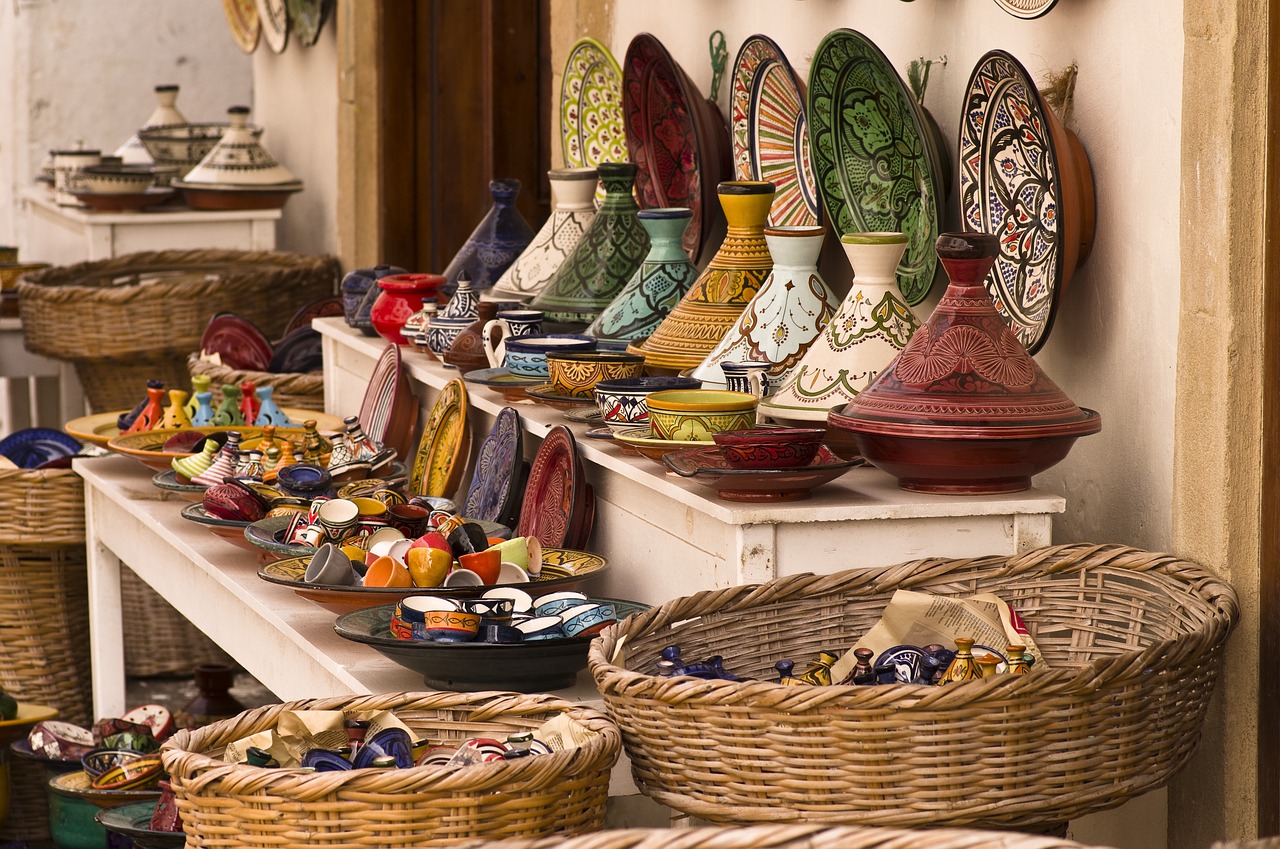
Creating a Productive Atmosphere
When it comes to pottery, the environment you work in can either inspire your creativity or stifle it. Imagine stepping into a studio that feels like a sanctuary, where every corner sparks joy and motivation. A productive atmosphere isn't just about having the right tools; it's about creating a space that resonates with your artistic spirit. So, how can you transform your pottery studio into a haven of productivity?
First off, let's talk about lighting. Good lighting is crucial in any workspace, but in a pottery studio, it can make all the difference. Natural light can boost your mood and help you see the true colors of your clay and glazes. If possible, position your work table near a window. If natural light isn’t an option, invest in high-quality, adjustable LED lights that mimic daylight. This not only helps you see your work better but also reduces eye strain, allowing you to focus for longer periods.
Next up is ventilation. Working with clay and glazes can release particles and fumes that you don’t want lingering in the air. Ensuring proper ventilation is essential for both comfort and safety. Consider installing an exhaust fan or opening windows to keep the air fresh. A well-ventilated space can also help maintain a comfortable temperature, which is crucial when working with materials that can be sensitive to heat and humidity.
Now, let’s dive into decor. Your studio should reflect your personality and artistic vision. Surrounding yourself with inspiring decor can ignite your creativity. Think about incorporating artwork that motivates you, plants that bring life to your space, or even a vision board that showcases your pottery goals. These elements not only make your studio more inviting but also serve as constant reminders of what you aspire to create.
Another aspect to consider is the layout of your studio. An efficient layout can significantly enhance your workflow. Arrange your tools and materials within arm's reach to minimize unnecessary movement. You might want to create distinct zones for different tasks—like a throwing area, glazing station, and drying space. This organization can streamline your process, allowing you to transition smoothly between tasks without losing your creative flow.
Lastly, don't underestimate the power of music or silence in your studio. Some potters find that playing their favorite tunes helps them get into a rhythm, while others prefer the quiet to focus deeply on their work. Experiment with different sounds to see what enhances your creativity and productivity the most. Whether it's the soothing sounds of nature or your go-to playlist, find what works for you.
In summary, creating a productive atmosphere in your pottery studio involves a combination of good lighting, proper ventilation, inspiring decor, an efficient layout, and the right auditory environment. Each of these elements plays a crucial role in fostering creativity and enhancing your overall pottery experience. So, take a step back, evaluate your space, and make the necessary adjustments to turn your studio into a true creative sanctuary.
- What is the best type of lighting for a pottery studio?
Natural light is ideal, but if that's not possible, use adjustable LED lights that mimic daylight to reduce eye strain.
- How can I improve ventilation in my studio?
Install an exhaust fan or ensure windows can be opened to allow fresh air circulation, which is vital for comfort and safety.
- What kind of decor should I use in my pottery studio?
Incorporate artwork, plants, and personal items that inspire you and reflect your artistic vision.
- How can I organize my studio for better efficiency?
Arrange tools and materials within easy reach and create distinct zones for different tasks to streamline your workflow.
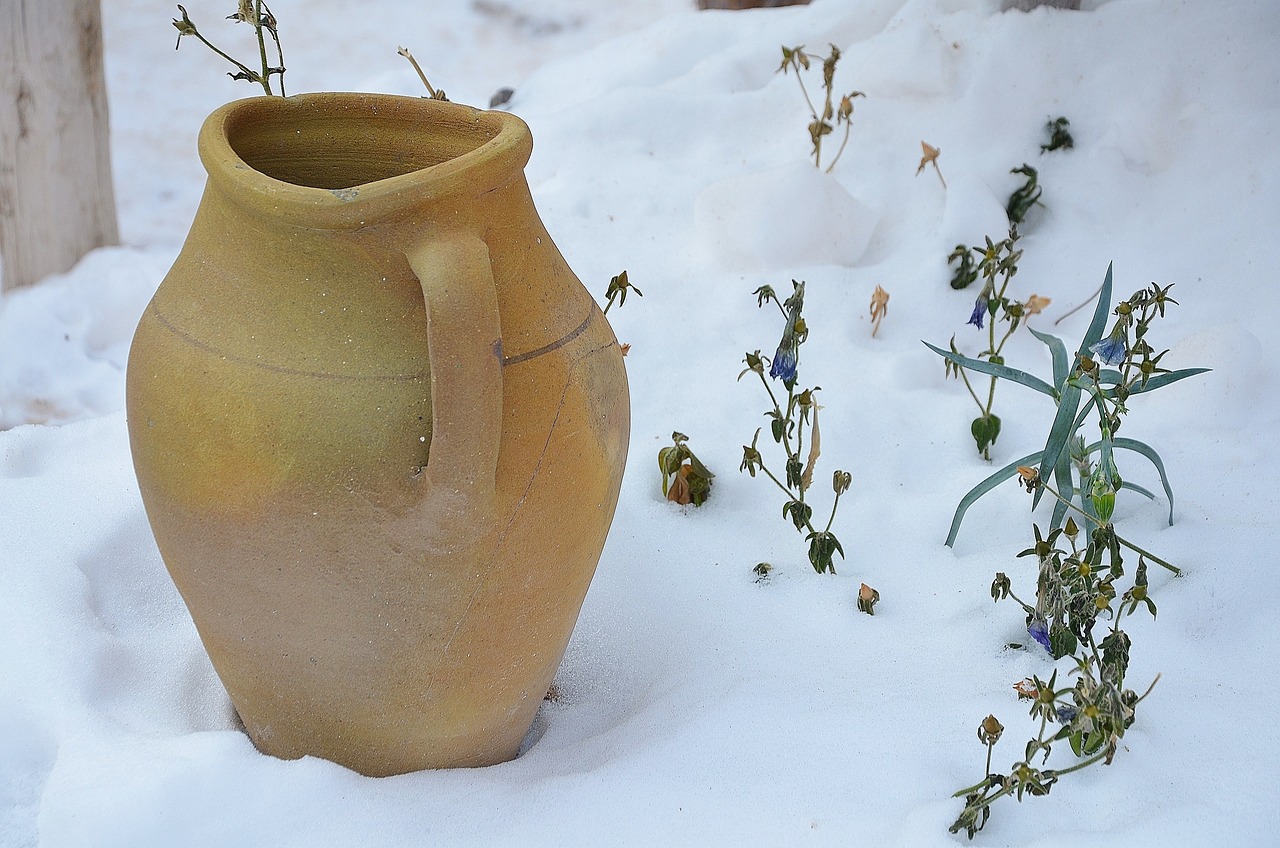
Lighting and Ventilation
When it comes to creating a productive pottery studio, lighting and ventilation play pivotal roles that can’t be overlooked. Imagine trying to mold clay in a dimly lit room; you might as well be sculpting in the dark! Proper lighting not only enhances visibility but also sets the mood for creativity. Natural light is often the best option, so if you can position your pottery wheel near a window, do it! Sunlight can invigorate your spirit and make the colors of your clay pop. However, if natural light isn’t an option, consider investing in daylight LED bulbs that mimic natural sunlight. This can significantly reduce eye strain and fatigue during those long creative sessions.
Ventilation is equally crucial, especially when working with materials that may release harmful fumes or dust. A well-ventilated studio ensures that fresh air circulates, keeping the atmosphere safe and comfortable. Think of your studio as a living organism; it needs to breathe! Installing exhaust fans or opening windows can help maintain airflow, but if your space allows, consider a dedicated ventilation system that can filter out harmful particles. This is not just about comfort; it's about health and safety.
To give you a clearer picture, here’s a simple table that outlines the key differences between natural lighting and artificial lighting:
| Type of Lighting | Advantages | Disadvantages |
|---|---|---|
| Natural Lighting |
|
|
| Artificial Lighting |
|
|
In summary, a well-lit and ventilated pottery studio can transform your creative process. You’ll find that the right lighting can inspire your artistic endeavors, while proper ventilation ensures that you can work comfortably and safely. So, take a moment to evaluate your workspace. Are you maximizing your lighting and ventilation? If not, it might be time to make some changes!
Q1: What type of lighting is best for a pottery studio?
A: The best lighting combines natural light with high-quality artificial lighting. Daylight LEDs are a great choice for artificial lighting as they mimic natural sunlight.
Q2: How can I improve ventilation in my pottery studio?
A: You can improve ventilation by installing exhaust fans, opening windows, or using air purifiers. A dedicated ventilation system can also be beneficial for filtering out harmful particles.
Q3: Is it necessary to have natural light in my studio?
A: While it’s not strictly necessary, natural light can significantly enhance your mood and creativity. If possible, try to incorporate it into your workspace.
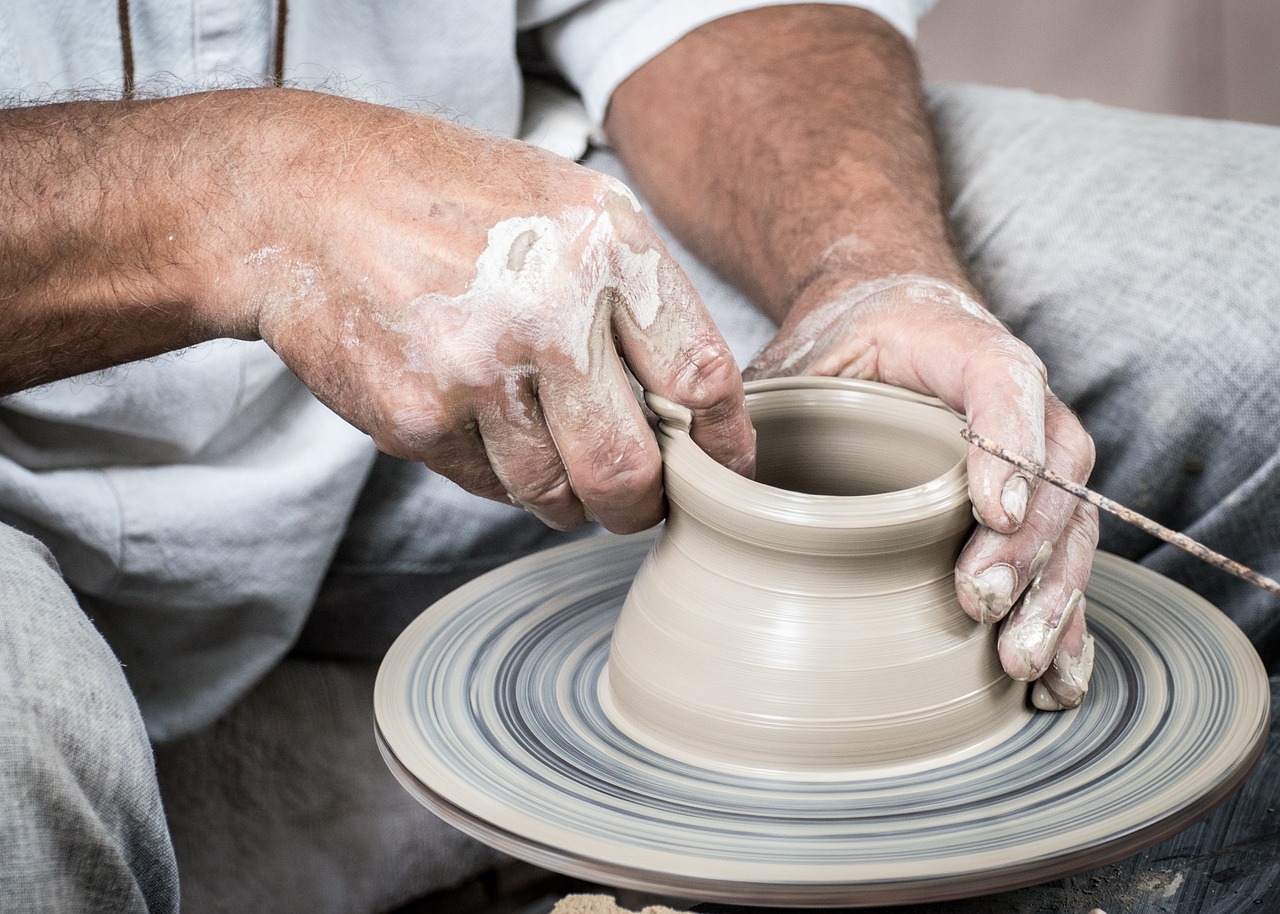
Inspiring Decor
When it comes to pottery, inspiration can strike at any moment. That’s why creating an inviting and motivating studio environment is essential. Your workspace should not only be functional but also a place where creativity can flourish. Imagine walking into a studio adorned with vibrant colors, eclectic art pieces, and personal touches that resonate with your artistic journey. This kind of atmosphere can significantly enhance your mood and productivity.
Start by considering the color scheme of your studio. Warm colors like yellows and oranges can evoke feelings of energy and happiness, while cooler tones, such as blues and greens, promote calmness and focus. You might even want to create a feature wall with a bold color or an inspiring mural that reflects your artistic vision. Don't forget to include artistic elements that resonate with you—be it pottery pieces you've created, photographs from your travels, or even quotes from artists that inspire you. These elements can serve as daily reminders of your passion and purpose.
Another way to enhance your studio's decor is by incorporating natural elements. Plants not only purify the air but also bring a sense of tranquility and life to your workspace. Consider adding a few potted plants or hanging succulents to brighten up the corners of your studio. Additionally, the use of natural materials like wood and stone can create a warm, earthy feel that connects you to the essence of pottery making.
Lighting plays a crucial role in creating an inspiring atmosphere. Utilize a combination of natural light and adjustable artificial lighting to ensure your workspace is well-lit at all times. Soft, warm lights can create a cozy vibe, while brighter lights can help you focus during those intricate detailing sessions. You could even consider installing string lights or lamps with unique designs to add a touch of whimsy to your studio.
Lastly, consider creating a dedicated inspiration board. This can be a corkboard or a wall where you pin images, fabric swatches, color palettes, and anything else that sparks your creativity. Regularly updating this space can keep your ideas fresh and encourage you to experiment with new techniques and styles. Remember, your studio is a reflection of you, so let it tell your story and inspire your work.
- How can I make my pottery studio more inspiring?
Consider adding personal touches, such as artwork, plants, and a well-thought-out color scheme that resonates with your creative spirit. - What role does lighting play in my studio?
Proper lighting enhances visibility and can influence your mood. A mix of natural and artificial lighting can create a comfortable working environment. - How often should I update my inspiration board?
Regular updates can keep your ideas fresh and motivate you to explore new techniques. Consider changing it monthly or whenever you feel stuck.
Frequently Asked Questions
- How can I organize my pottery studio for better efficiency?
Organizing your pottery studio starts with arranging your tools and materials in a way that makes them easily accessible. Consider using shelves, pegboards, and labeled containers to keep everything in its place. A clutter-free workspace allows you to focus on your craft without the distraction of searching for misplaced items.
- What time management techniques can I use in my pottery practice?
Effective time management is all about planning and prioritizing. Try setting specific work sessions where you focus solely on your pottery projects. Use tools like calendars or apps to block time for different tasks, ensuring you stay on track and make the most of your studio hours.
- How should I set goals for my pottery projects?
Setting goals is crucial for maintaining motivation. Break your goals into short-term and long-term categories. Short-term goals can be daily or weekly tasks that provide quick wins, while long-term goals should focus on your overall journey and growth as a potter.
- Can technology really help improve my pottery studio efficiency?
Absolutely! Incorporating technology can streamline many processes in your studio. From design software that helps you visualize your creations to inventory management tools that keep track of your supplies, technology can save you time and effort, allowing you to focus more on your art.
- What are the best practices for material management in pottery?
Effective material management involves sourcing quality materials and keeping track of your inventory. Make sure to store your clay and supplies properly to avoid waste. Regularly check your inventory to prevent shortages and plan your purchases accordingly.
- How can I reduce waste in my pottery studio?
Implementing waste reduction strategies can significantly save resources. Consider recycling clay scraps, using only what you need, and planning your projects to minimize excess material. This not only helps the environment but also saves you money in the long run.
- What kind of atmosphere should I create in my pottery studio?
A positive and inspiring atmosphere can greatly enhance your creativity. Focus on proper lighting and ventilation for comfort and safety. Additionally, personalize your space with decor that inspires you, whether it’s artwork, plants, or motivational quotes.
- How important is lighting and ventilation in a pottery studio?
Lighting and ventilation are essential for both comfort and safety in your pottery studio. Good lighting helps you see your work clearly, while proper ventilation ensures that you’re breathing in clean air, especially when working with glazes and other materials.
- What are some ideas for inspiring decor in my studio?
Incorporating inspiring decor can really boost your creativity. Consider adding personal touches like your favorite artworks, plants, or a vision board that showcases your goals and inspirations. Creating a space that reflects your personality can make your studio a more enjoyable place to work.



















